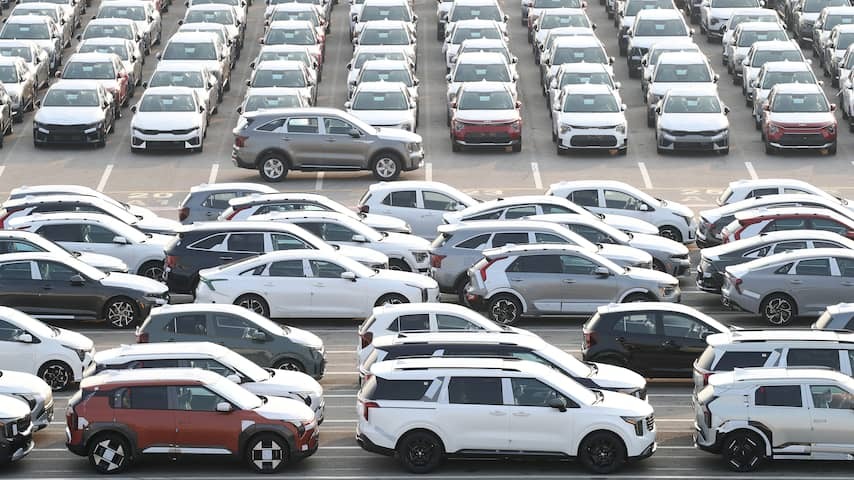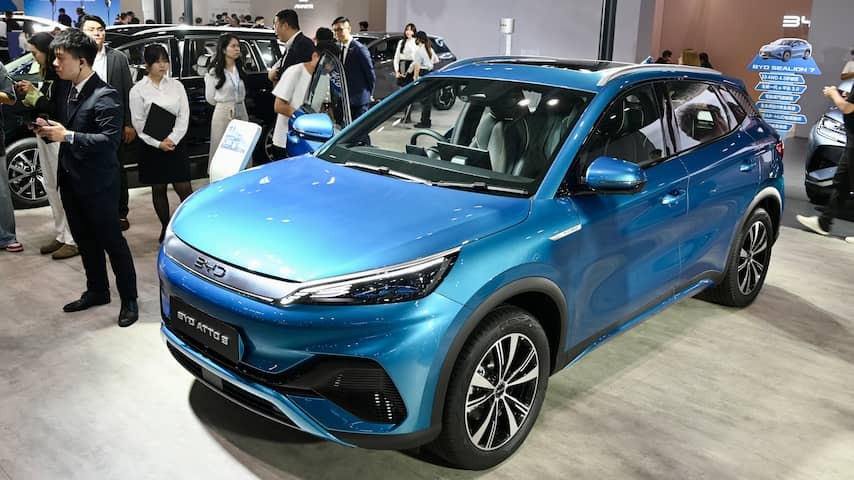
The American Import Tariffs Are Nuisance The European Car Market, But There is More at Play. Such as the Asian Competition and the Uncertainty About Electric Driving. Some manufacturers are making strategic choices that are turning out wrong. Meanwhile, The Korean Manufacturer Kia Sees Its Opportunity.
Executives of Car Manufacturers Spoke of A Challenging Situation in recent weeks. This is evident from Their Painful Figures. Porsche Sold 6 percent FeWer Cars Worldwide. Volkswagen’s Profit Fell by More than a third to 4.5 Billion euros in the first half of this year. Audi Showed a Similar Loss percentage. Renault just Suffered a Billion-Dollar loss.
“It’s going worse than expected, but not all car manufacturers are doing equally badly,” Says Erik Slavel, Sector Specialist Mobility at ING. “Renault’s loss, for example, is due to an adjustment of the stake in nissan. Without that substantial write-down, it’s actual Doing QUITE well if you look under the hood.”
“Renault is more European oriented,” slave continues. “Many of Those German Premium Brands Sold a Lot in China, But Chinese People Increasingly Associate Those Brands With Fossil-Fueled Engines. They are increasingly Looking to Their Own Market for Electric Cars.”
Yet these are turbulent Times for European Car Manufacturers. Demand in Europe is Decreasing. Electric Driving is Emerging, But Switching to It is an Exensive Investment for Consumers. China is fully committed to electric and is increasingly focusing on the European Market.
“The Uncertainty for European Manufacturers Already Existed and now there are also the American Import Tariffs,” Says Slave. The United States had Imposed an Import Tariff of 25 percent in the first half of the year, which made the cars significantly more exensive there.
Due to New Agreements, A Rate or 15 percent Now Applies to European Products in the US. Better, But Still A Tariff.
“The Car Manufacturers Were Already on the Eve of Important Strategic Choices and the Issues Are Only Getting Bigger,” Says Slave.
Deep in the Red Figures
The Choices That Manufacturers Make Do Not Always Turn Out Well. “Stellantis is A Good Example,” Says Marieke Kuijpers, Sector Manager Mobility & Logistics at Rabobank.
Stellantis produces not only cars from Fiat, Opel, Citroën, Peugeot and Alfa Romeo, but also from the Well-Known American Brands Dodge, Chrysler and Jeep. The Group, Whose Global Headquarters is located in Hoofddorp, looted Deep Into The Red Figures in the First Half of the Year. The Net Loss was 2.3 Billion Euros, Partly Due to Import Tariffs.
“Stellantis” American Brands are produced in Canada and Mexico, “Says Kuijpers. High Import Tariffs Still Apply to Products From These Countries, which Reduces Sales in the US. “The Company is Considering Moving Production to America. You see that child of Consideration a Lot in the Trade War.”
To Improve Profitability, Stellantis Chose A Different Way of Working in Some Places. Instead of a Dealer Buying Cars from the Group, The Intermediary Received a Commission for the Sale, While Stellantis Remained the owner.
“After Implementation in Four Countries, The Further Rollout of this Project Has Been Stopped,” Says Kuijpers. “That cost a lot of money.”
China Has About 150 Car Brands
Many European Car Manufacturers Complain about Chinese competition in their half-year figures. The German Premium Brands Are Seeing Sales Figures in China Decline Sharply. Renault and Stellantis Are Prulpularly Concerned About Competition in Europe.
“The Question is which competition Weighs The Heaviest,” Says Kuijpers. “The competition on the Chinese Market, or the competition from Chinese Models here.”
“European Premium cars are increasingly less of a status symbol in China. As a result, sales are funing, probably also because there are increasingly better cars from the Chinese market itself.”
Accordance to the sector manager, The Chinese brands that come to Europe are the brands that were already doing well in China. “There are something like 150 brands in China, or which 20 are coming to the Netherlands. Byd is by far the most successful of thesis.”
“There is QUITE A COMPETITION Going on in Europe, but the Market Share of Chinese Cars is Still Limited. Up to and Including June, It was about 4 percent. The Expectation is that Will Increase.”

Further Pressure on Competition
Kuijpers Notes That a Lot Of Attention is Paid to the New Competition from China, But That An Important Part of the Competition Has Been Present in The West For Much Longer. The South Korean Kia Sees How Difficult Other Car Manufacturers Are Having It. The Company Wants To Put Further Pressure On The Competition with New, Affordable Models.
“A Huge Amount of Money is Involved in Introducing New Models and Conquering the Market. But in the Netherlands it is going exceptionally well.” Kia’s Market Share in the Netherlands Grew to Almost 11 percent in the First Half of 2025 – Making it at the top of the list of Car Manufacturers.
“Opel and Volkswagen Used to Top The Lists, Now It’s Kia,” Says Kuijpers. “They have a strong range, a strong importer and a strong dealer Network. Like many asian brands, it is not premium, but it does deliver a lot of quality. European brands did not take this into account in the past and they are now suffering from it.”
Jumping Into The Gap That Tesla Leaves Behind
“Kia Has Beautiful Fully Electric Cars and also Hybrid Models,” Says Slave. “The Chinese Brands Are Now also Focusing on Hybrid.” The sector specialist also notes that Volkswagen is Doing Quite Well with Electric Cars in Europe. “Maybe they are Jumping Into the Gap that Tesla Leaves Behind.”
Accordance to slave, The Battle Between these brands Could Be Good for Consumers. “Ultimately, you will see if chinese brands continuously to come with cheaper cars, electric cars in general Will Become more affordable. That is good for limiting CO2 emissions from Road Traffic. But it is not good for European manufacturers.”